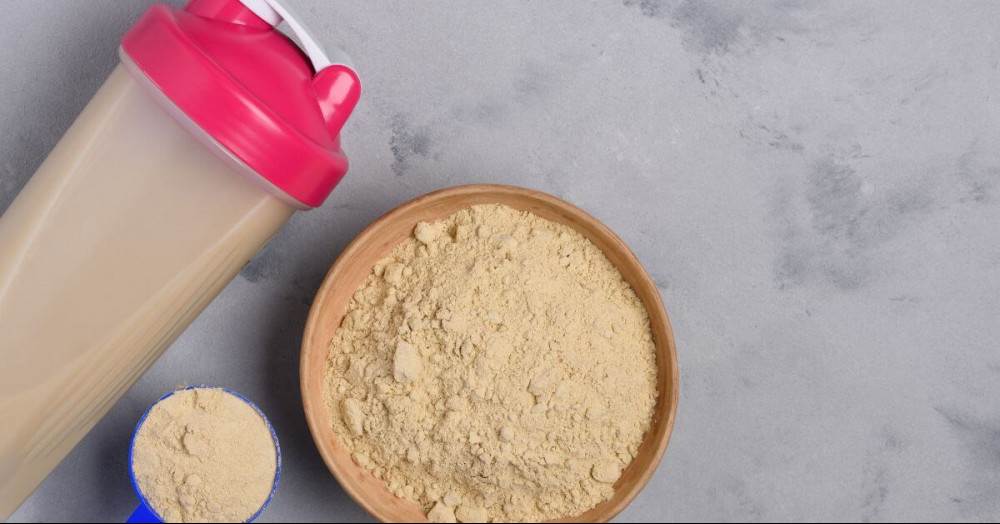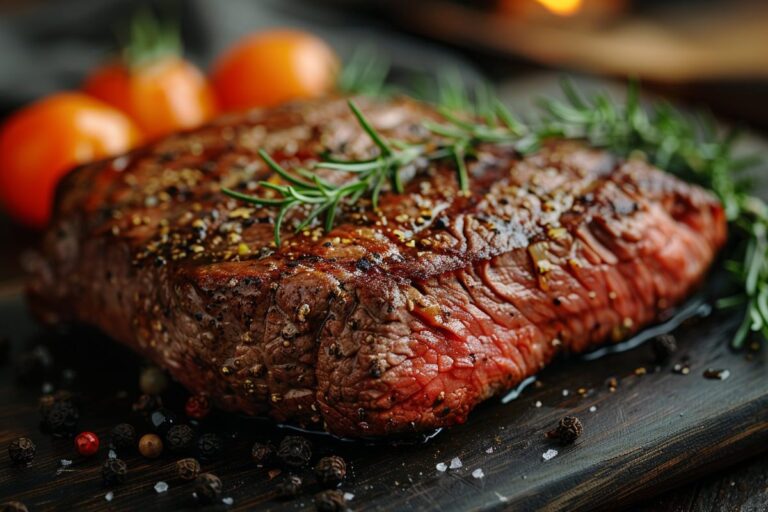So, the fact that you’re here and reading this means you’re either using protein powders or other supplements already or are thinking about it. Either way, you’re probably wondering just how long it will take to see the benefits of your daily protein scoop.
Well, there are a few things to consider. In this post, we’ll look at how the type of protein powder affects its absorption by the body, when to take your protein powders for the best impact, and signs that your protein powders are making a difference.
Let’s take a look at the details.
Whey protein is quickly absorbed and peaks at around 30-60 minutes, making it a great choice for post-workout recovery, while casein provides a steady release of amino acids over a few hours that is ideal before bedtime. Plant-based proteins offer a compromise between the two and serve as a suitable option for vegans or individuals with dairy sensitivity. Pay attention to indicators such as increased energy, reduced muscle soreness post exercise, and improved endurance to determine whether your protein powder is giving you the effects you are looking for.
How Quickly Does Protein Powder Start Working?
Not all protein powders are created equal. When it comes to how fast they are digested and absorbed, there are a few key factors to consider. These factors all directly influence the rate at which amino acids are delivered from your protein supplement into your bloodstream and muscles.
Type of Protein
The biggest factor determining protein powder absorption is the actual type of protein used. There are three main categories, each with varying digestion speeds:
- Whey – The fastest absorbing protein powder. Whey is derived from milk and typical digestion takes around 30-60 minutes after consumption. This makes it ideal for post-workout.
- Casein – A gradually absorbing milk protein that creates a ‘clump’ or ‘ball’ in the stomach that releases amino acids over several hours. Casein makes an excellent before-bed protein supplement.
- Plant-based – Includes proteins like pea, rice, and soy. They are the middle of the road between whey and casein for digestion. They generally reach peak amino acid levels 1-2 hours after intake.
I’ll expand more on how the type of protein impacts time to kick in shortly. First, let’s look at some other key factors:
Amount Consumed
There’s a long-lived misconception that the body can only absorb 20-30g of protein at a time. However, evidence from this study found that consuming the majority of daily protein intake in one meal had no negative effect on muscle mass. This was compared to breaking protein intake down across smaller portions.
The study was carried out on elderly subjects but it still confirms that being able to digest and utilise just 20-30g of protein per meal is likely false.
Protein Absorption From A Single Meal
Other Foods and Drinks
Taking protein powder with foods that are high in fibre or fat can slow down the emptying of your stomach and this has a knock-on effect on protein absorption. Staying hydrated with water helps with overall digestion, and in particular protein powders.
Individual Physiology
Factors like your metabolic rate, gut health, hydration, activity levels, and more can impact how efficiently you break down and utilise protein. Older adults may find slower digestion times. This can be counteracted in part by increasing fluid intake.
Okay, now let’s dive deeper into how different proteins influence kick-in times…
Whey Protein – Fast Protein Absorption For Rapid Recovery
If you’re looking for a protein powder that gets to work quickly, look no further than whey. This milk-based protein is probably the most popular protein powder and has long been the gold standard for speedy amino acid delivery.
Here’s why it earns that reputation:
- Whey is rapidly emptied from the stomach and absorbed by the intestines thanks to its high solubility in water. This quick entry into the bloodstream makes it the ideal “surge” protein for post-workout recovery.
- This study reported peak amino acid levels from whey protein appearing in the bloodstream within 15 minutes and peaking at around 60. The ability to quickly spike protein synthesis makes it perfect for stopping muscle breakdown immediately after training.
- The high leucine content of whey also helps kickstart the muscle-building process. Leucine is a key branched-chain amino acid (BCAA) that directly activates muscle protein synthesis.
Whey protein powder absorption is fast, usually peaking within an hour post-drink. The next time your muscles need protein fast, like following exercise, whey is your go-to protein.
Casein – Slow and Steady Absorbing Protein
Casein protein powder is the complete opposite of whey protein, providing a much slower release of amino acids that can last for many hours. Here’s what makes casein a digestive marathon runner rather than a sprinter:
- In the stomach, casein forms into ‘clumps’ or ‘balls’ called micelles which gel and slow the rate of stomach emptying. This delays its entry into the bloodstream.
- The peak amino acid levels from casein occur between 3-4 hours. This makes it less ideal for that quick post-workout burst, but excellent for a sustained protein supply during the night.
- Casein is a perfect post-bedtime option as it provides a steady supply of amino acids for repairing muscle tissue while asleep.
- Compared to whey, casein is better at appetite reduction and increasing the feeling of fullness. Casein has been reported to increase periods of satiety to around 1-2 hours compared to around 30 minutes with whey.
For these reasons, I make casein protein powder my go-to choice in the evenings and between meals. Using casein powder when in a calorie deficit helps to control hunger cravings and makes it easier to stay within the deficit.
Plant Proteins – Somewhere in the Middle
Plant-based protein powders like pea, rice, and soy offer a nice middle ground between the rapid effects of whey and the slow release of casein:
- Most plant proteins peak around 1-2 hours after consumption. This makes them a decent choice both post-workout and between meals.
- Pea protein is one of the faster absorbing options, thanks to its soluble, low allergen properties. The strength and performance results from pea protein consumption are comparable to whey according to this study.
- The moderate absorption rate allows plant proteins to help promote muscle growth while avoiding dramatic spikes and crashes.
- For vegans and those sensitive to dairy, plant powders provide a more easily digested alternative compared to whole food sources.
If you’re on a vegan diet or have a sensitivity to dairy, plant protein powders can be as effective as whey and casein. Personally, unless you HAVE to use plant-based protein powders, I’d stick with casein and whey as I find plant protein powders are harder to dissolve and create a smooth protein shake.

Timing Your Protein Depending On Your Goals
Now that we’ve gone through the factors that impact how quickly protein powder kicks in, let’s talk about how to time it ideally based on your fitness goals and needs.
Post-Workout
After a workout, your muscles are primed to absorb amino acids rapidly thanks to increased blood flow. For maximizing post-exercise anabolism, whey protein has the obvious advantage:
- Take 20-25g of whey protein within 30 minutes after training for best results.
- Whey provides the crucial fast-acting protein your muscles need following exercise to kickstart repair and growth.
- Adding some quick-digesting carbs like dextrose can further boost the muscle-building response by spiking insulin when paired with whey protein.
For these reasons, whey protein powder is hands down the best post-workout choice if you’re looking for dramatic improvements in recovery and strength/muscle gains.
Before Bed
During sleep, your body undergoes several physiological changes that help in the repair and recovery of muscle tissue. A slow-releasing protein like casein is a great way to fuel your body with amino acids while you’re fast asleep:
- Have 20-30g of casein powder 30-60 minutes before bed to provide a steady trickle of amino acids all night.
- This prevents catabolism (the breakdown of complex molecules) so you wake up with your hard-earned muscle still intact.
- Casein also improves the muscle-building effects of sleep by enhancing overnight protein synthesis.
By using casein at night instead of whey, you can put those long rest hours to use building your physique.
Between Meals
There are two scenarios with this one.
When it’s been a while since your last whole food meal or protein intake, your muscles start getting hungry for more amino acids. Here, rapidly digesting whey is the way to go.
However, if you’re in a calorie deficit and trying to control your hunger and appetite, a scoop of casein is the one to go for.
- 20-25g of whey between meals staves off muscle breakdown.
- 20-25g of casein will help to keep you fuller for longer.
- A combination of the 2 will provide a sustained amino acid supply and keep you anabolic for longer between meals.
I would go with a casein during the day, purely to keep any hunger cravings in check but it all depends on what you are trying to achieve yourself.
Weight Loss
When cutting calories for fat loss, maintaining precious muscle is essential. Again, whey protein provides the perfect quick-absorbing solution:
- Use protein powders before/after workouts and between meals when dieting to protect your muscles from breakdown. In a calorie deficit, your body will begin to catabolise your muscle protein for energy unless you maintain your protein intake.
- The constant amino acid delivery reduces catabolic periods in between whole food meals.
- Protein is very satisfying, helping to control hunger. This allows you to eat in a caloric deficit without ravenous cravings.
By supporting muscle retention and satiety when cutting, protein powder is a powerful tool for losing fat without losing strength.
When Should You Take Your Protein?
How Can You Tell if Your Protein Powder is Working?
So you’re using your protein powder of choice and consuming it at the right time for your goals, but how do you know it’s doing exactly what you want it to?
Here are some ways you can tell those supplemental amino acids have started to get to work:
- Increased energy, reduced fatigue – A key sign amino acids have hit the bloodstream
- Muscles feel fuller and tighter – Signals amino uptake by muscle cells
- Reduced post-workout muscle soreness – Quicker recovery thanks to protein synthesis
- More strength, stamina, endurance – Ability to push harder and recover faster
- Better workout focus and concentration – Amino acids provide fuel for the brain too!
- Decreased appetite and cravings – Protein is very satiating, curbing hunger
- Improved sleep quality – Especially when taking casein protein before bed
By paying attention to these performance, recovery, and physique markers, you can gauge whether your protein powder is kicking in effectively. Tweaking the timing or type of protein can help you achieve the results you’re after.

Protein Powder for Beginners
If you’re just getting started with protein powders and resistance training, you may feel overwhelmed by all the different types and not know which is right for your needs.
The big question is though, are protein powders a waste of time and money for a beginner and are ‘newbie gains’ enough to see muscle growth?
A possible misconception that beginners hold is that the gains they’re seeing are a result of the protein powders and shakes they’re consuming. In fact, in the very early days, it’s more likely that they’re seeing more results from newbie gains than the additional protein consumption.
Newbie gains are a rapid increase in muscle that comes as a result of an ‘untrained’ or ‘newbie’ finally starting to lift heavy weights. The body naturally adapts to the excess stress on the muscles and building muscle is relatively easy. These results can last anywhere from 6 months to a year.
While protein powders have major benefits for dieting, and muscle maintenance and growth, it’s worth remembering that they’re not the whole reason for your progress. This can be down to your body adapting to the increased stress you’ve been putting on it.
Tips to Maximize Absorption for Best Results
Once you’ve nailed down the optimal timing, there are some additional ways to ensure your protein powder is absorbed rapidly and efficiently:
- Include foods such as figs, kiwis, mangoes, papayas, pineapples, and yoghurt in your diet. These foods are good sources of protease, the enzyme that aids in breaking down proteins to allow for better absorption.
- Improve your gut health. A good way to do this is by maintaining a balanced diet that includes raw fruits and vegetables. The other option is to mix your protein powder with a probiotic like kefir.
- Drink plenty of water all day every day. Proper hydration equals better digestion and absorption.
Protein Myth-Busting
Given protein powders are so popular, there’s naturally a lot of misinformation floating around about how fast they work. Let’s clear up some common myths:
- Myth: Plant proteins have poor absorption compared to animal proteins.
Fact: Studies show similar absorption rates between plant and animal proteins in powder form. Both provide rapid spikes in amino acids. - Myth: Whey protein powder takes hours to fully digest.
Fact: Whey peaks just 30-60 minutes after intake thanks to its high solubility and leucine content. This makes it one of the fastest proteins available. - Myth: Taking a bigger serving results in faster absorption.
Fact: Megadoses take longer to digest fully. 20-30g is the sweet spot for most protein powders. More is not faster! - Myth: You need to cycle different protein powders every few weeks.
Fact: There’s no evidence your body “gets used” to any certain protein type. There’s no need to rotate them. Choose based on your needs and preferences.
Key Takeaways
How effective your protein powder supplements are depends on several key factors, including the type of protein you choose, your timing, and your individual goals.
Whey protein delivers rapid absorption, making it perfect for post-workout recovery, while casein provides a steady supply of amino acids ideal for bedtime. Plant-based proteins offer a middle ground and serve as a suitable alternative for vegans or those with sensitivity to dairy.
Aligning your protein intake with your fitness objectives, whether it’s muscle growth, appetite control, or weight loss is important in deciding what type of protein powder to use and when. Bear in mind though that newbie gains can be responsible for some muscle growth in beginners.
By paying attention to signs such as increased energy, reduced muscle soreness, and improved endurance, you can gauge the effectiveness of your protein powder.
Lastly, don’t be swayed by common myths; instead, focus on evidence-based practices to make the most of your protein powders.
What do you think? Feel free to share or leave any comments below.
Your Protein Powder Absorption Q&A
Let’s wrap things up with some rapid-fire Q&A covering additional common questions about protein powder digestion times:
Q: How does very high protein intake impact absorption rates?
A: Above ~40g per meal is when absorption may become saturated. Spreading intake over multiple smaller servings maximizes absorption.
Q: Do additional flavours or sweeteners slow down digestion?
A: Most powders digest at the same rate regardless of flavouring. Keep sweetener content moderate of course.
Q: Which types of protein cause the most bloating or gassiness?
A: Some individuals can get bloated from whey or casein due to lactose. Plant proteins are typically easier to digest for these people.
Q: Will having caffeine help my protein powder kick in faster?
A: No, caffeine doesn’t directly impact protein absorption rate or its effectiveness. It’s fine to mix in your pre-workout though!
Q: Are there health risks with faster-absorbing protein powders like whey?
A: No evidence suggests quickly digested proteins carry any harm. They just provide amino acids sooner compared to slower proteins.







